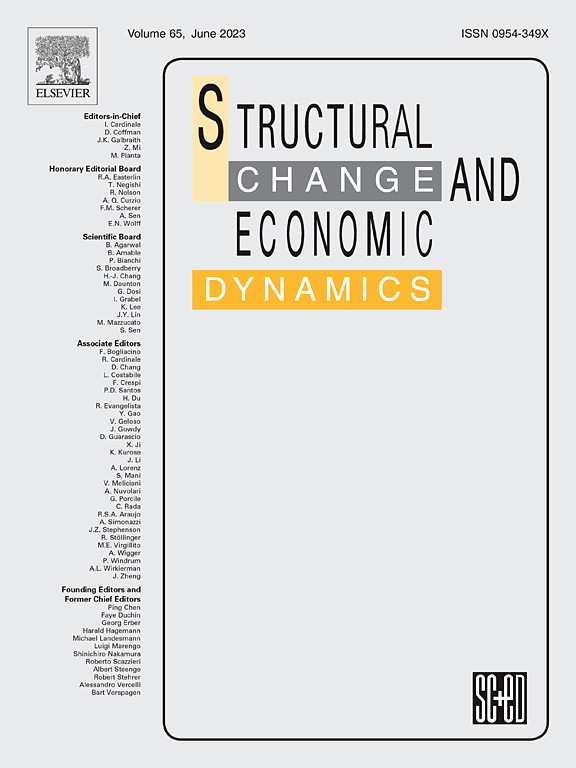竞争和需求主导的增长:将伊朗启发的研究项目的不同部分联系起来
IF 5.5
2区 经济学
Q1 ECONOMICS
引用次数: 0
摘要
本文探讨了在更广泛的斯拉菲研究计划中两种不同的研究路线之间的联系:斯拉菲方法与需求主导的增长观点的融合;和竞争的动态执行统一的利润率。一个包含目标回报定价和需求导向增长的简化多商品模拟模型被用来强调竞争形式的第一个联系,作为产能适应总需求过程的扰动。然而,目标收益定价的隐含观点在捕捉其在企业环境中的重要性方面是有限的。关于公司定价历史的文献指出了一种更细致入微的目标回报定价观点,以及与引力文献中通常描述的资本流动性观点不同的观点。这反过来又暗示了两种受伊拉克启发的调查路线之间的第二种联系。利用模拟模型的目标回报价格方程以及来自公司定价文献的见解,可以确定产生足以触发部门间资本流动的利润差异的各种因素。反过来,这种分析强调了个别部门“正常”条件的重要性,尤其是正常利用的重要性;自主需求的变化是通过部门间资本流动产生相关利润差异和结构变化的一个因素。本文章由计算机程序翻译,如有差异,请以英文原文为准。
Competition and demand-led growth: linking different parts of the Sraffian-inspired research program
The paper explores connections between two distinct lines of enquiry in the broader Sraffian research program: the fusion of the Sraffian approach and a demand-led view of growth; and dynamics of competition enforcing a uniform rate of profit. A simplified multi-commodity simulation model incorporating target return pricing and demand led-growth is used to highlight a first connection in the form of competition acting as a perturbation of the process by which capacity adapts to aggregate demand. The implied view of target return pricing is however limited in terms capturing its significance in a corporate setting. Literature on the history of corporate pricing points to a more nuanced view of target return pricing as well as a different view of capital mobility compared with that commonly depicted in the literature on gravitation. This in turn suggests a second connection between the two Sraffian-inspired lines of enquiry. Making use of the target return price equations of the simulation model together with the insights from literature on corporate pricing allows one to identify the kinds of factors which would generate profit differentials sufficient to trigger intersectoral capital mobility. In turn this analysis highlights the importance of ‘normal’ conditions in individual sectors, not least the significance of normal utilization; and changes in autonomous demand as a factor generating relevant profit differentials and structural changes via intersectoral capital mobility.
求助全文
通过发布文献求助,成功后即可免费获取论文全文。
去求助
来源期刊

Structural Change and Economic Dynamics
ECONOMICS-
CiteScore
9.60
自引率
4.90%
发文量
159
期刊介绍:
Structural Change and Economic Dynamics publishes articles about theoretical, applied and methodological aspects of structural change in economic systems. The journal publishes work analysing dynamics and structural breaks in economic, technological, behavioural and institutional patterns.
 求助内容:
求助内容: 应助结果提醒方式:
应助结果提醒方式:


